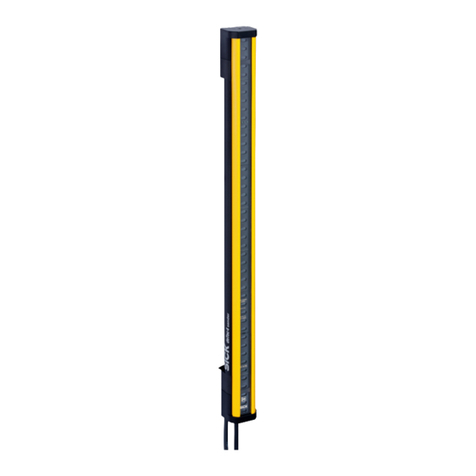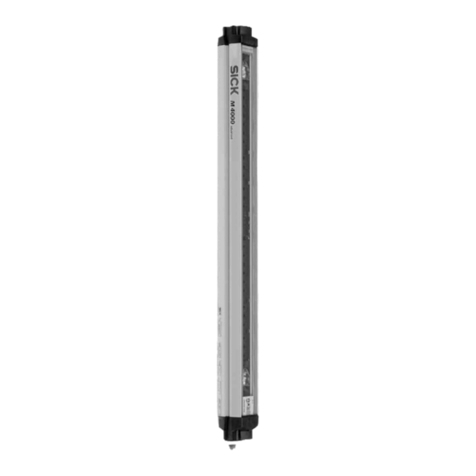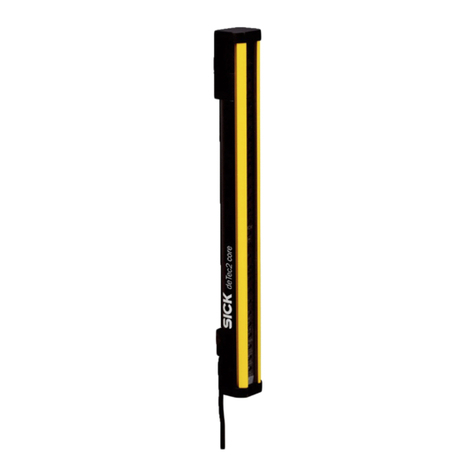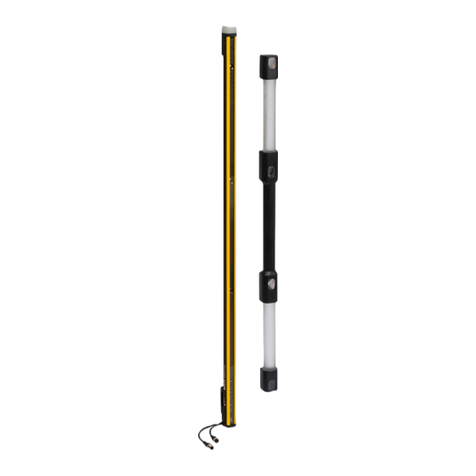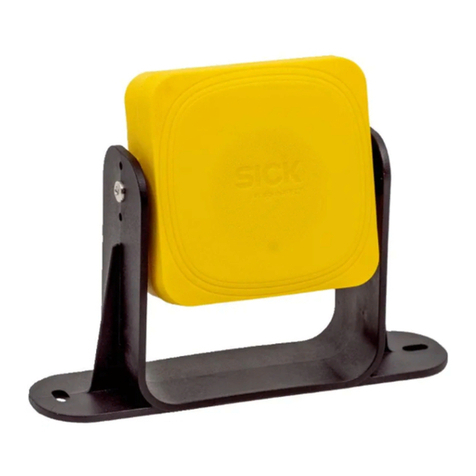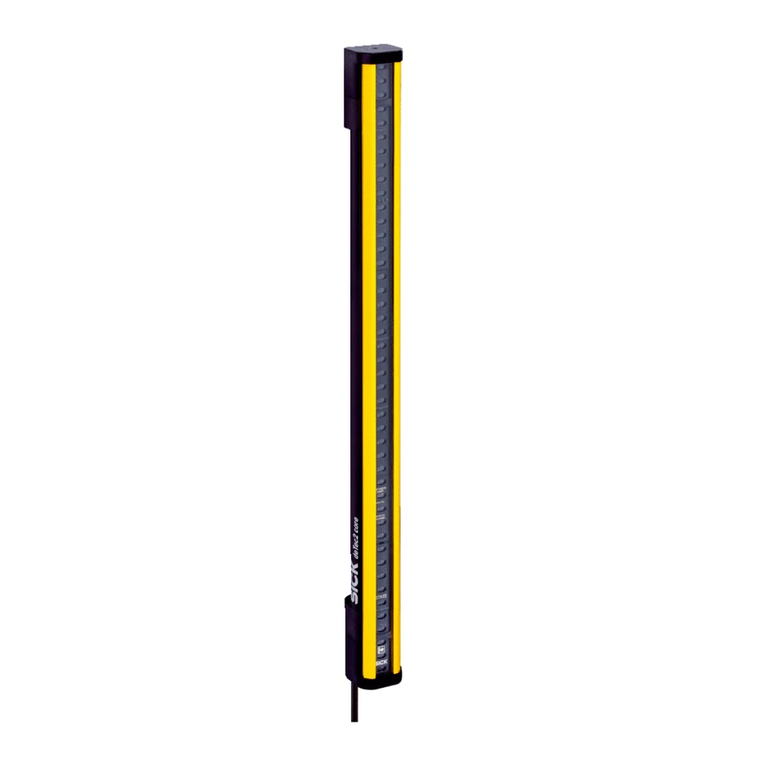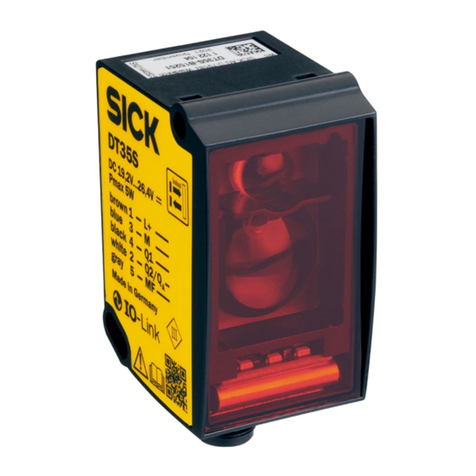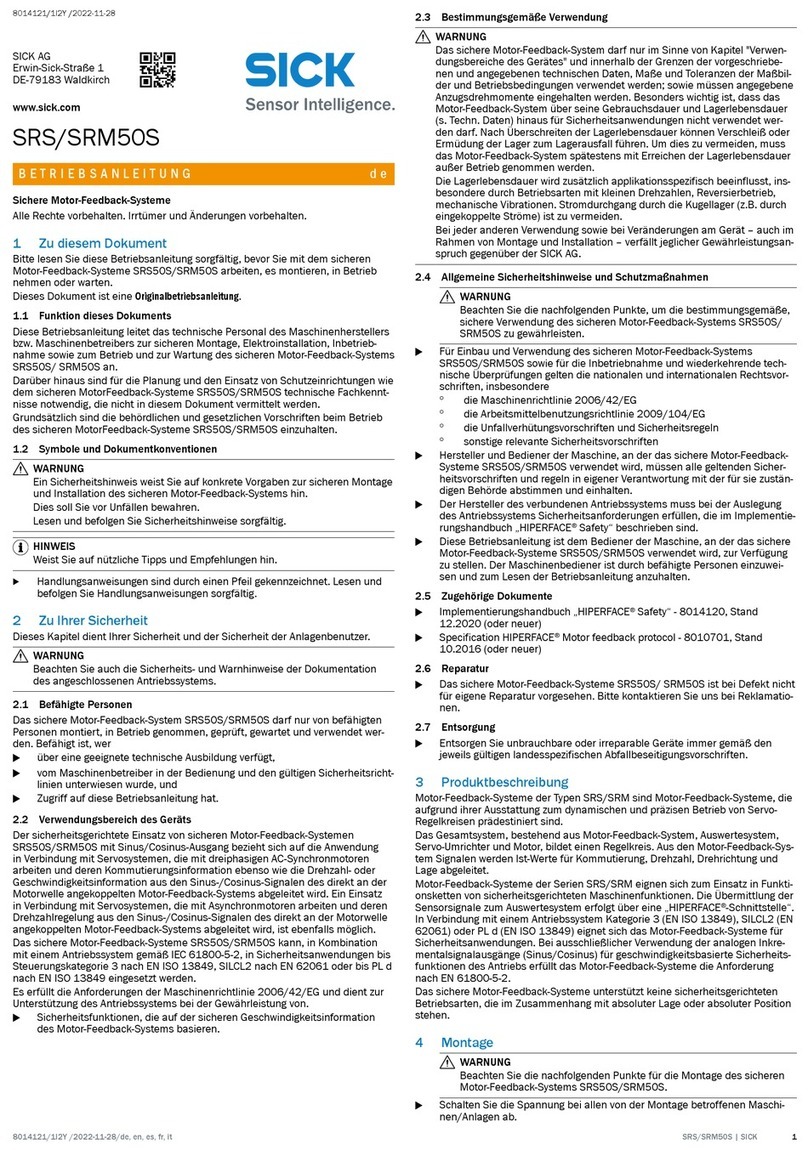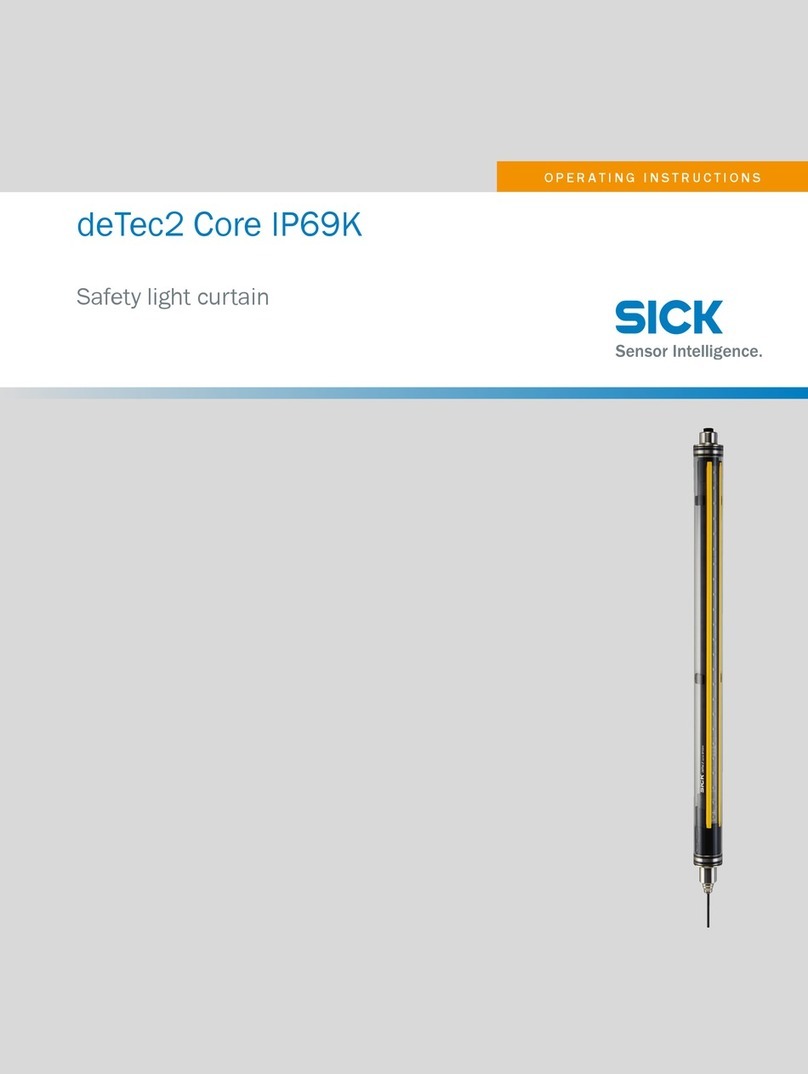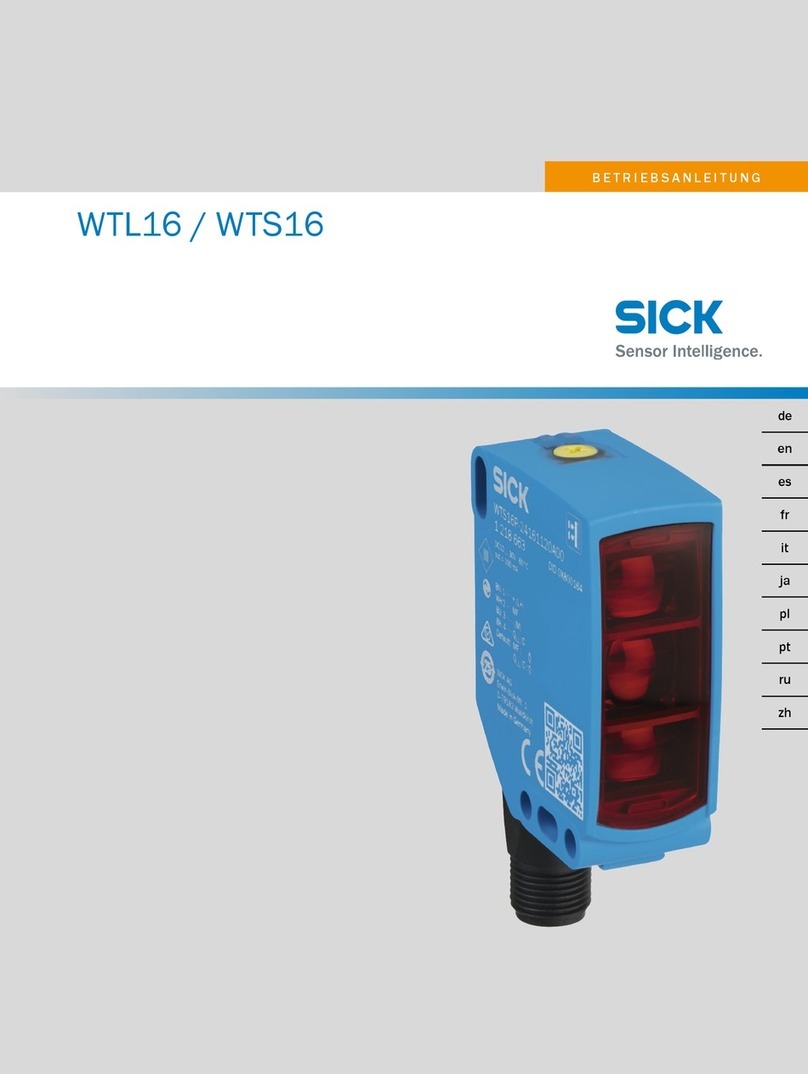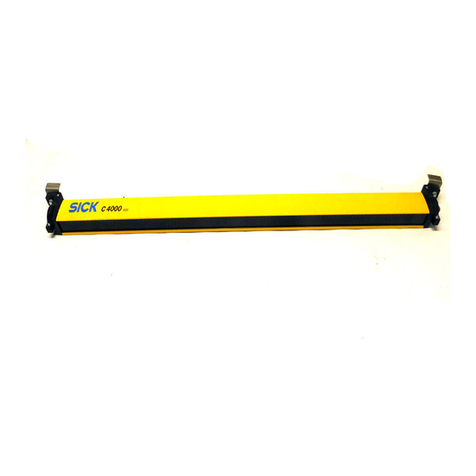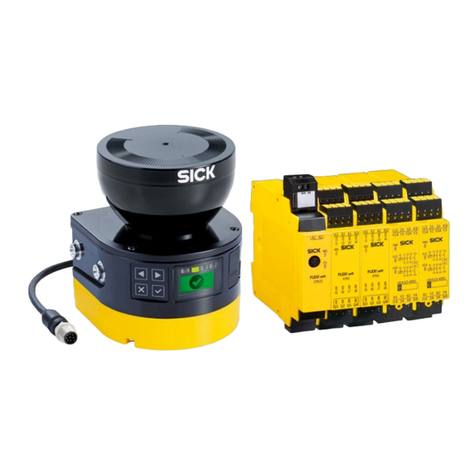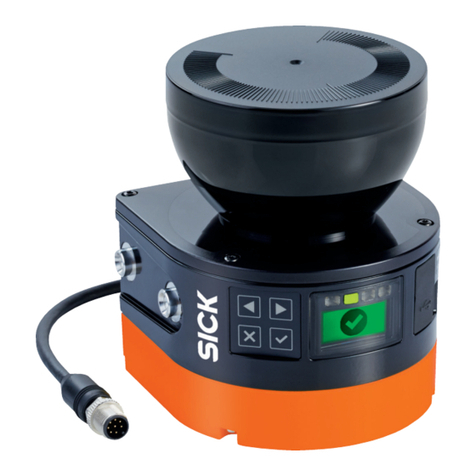
5.3.1 Mounting the QuickFix bracket............................................... 35
5.3.2 Mounting the FlexFix bracket.................................................. 36
5.3.3 Mounting the upgrade bracket............................................... 39
5.4 Affixing labels............................................................................................ 39
6 Electrical installation........................................................................ 41
6.1 Safety......................................................................................................... 41
6.2 System connection (M12, 5-pin)............................................................. 42
6.3 System connection via connection cable (M12, 5-pin to 8-pin)............ 43
7 Commissioning.................................................................................. 44
7.1 Safety......................................................................................................... 44
7.2 Overview.................................................................................................... 45
7.3 Switching on.............................................................................................. 45
7.4 Sender and receiver alignment................................................................ 45
7.4.1 Aligning the sender and receiver............................................ 46
7.4.2 Alignment with the QuickFix bracket...................................... 46
7.4.3 Alignment with the FlexFix bracket or with the upgrade
bracket...................................................................................... 47
7.4.4 Indication of the alignment quality......................................... 48
7.5 Check during commissioning and modifications.................................... 49
8 Operation............................................................................................ 50
8.1 Safety......................................................................................................... 50
8.2 Regular thorough check........................................................................... 50
9 Maintenance...................................................................................... 51
9.1 Safety......................................................................................................... 51
9.2 Regular cleaning....................................................................................... 51
9.3 Regular thorough check........................................................................... 52
10 Troubleshooting................................................................................. 53
10.1 Safety......................................................................................................... 53
10.2 Diagnostic LEDs........................................................................................ 53
10.2.1 Fault indicators........................................................................ 53
11 Decommissioning............................................................................. 56
11.1 Disposal..................................................................................................... 56
12 Technical data.................................................................................... 57
12.1 Data sheet................................................................................................. 57
12.2 Response time.......................................................................................... 59
12.3 Power consumption.................................................................................. 59
12.4 Length of cable......................................................................................... 60
12.5 Table of weights........................................................................................ 60
12.6 Dimensional drawings.............................................................................. 61
13 Ordering information........................................................................ 63
CONTENTS
4O P E R A T I N G I N S T R U C T I O N S | deTec2 Core Ex II 3GD 8021855/14Q6/2020-04-27 | SICK
Subject to change without notice

